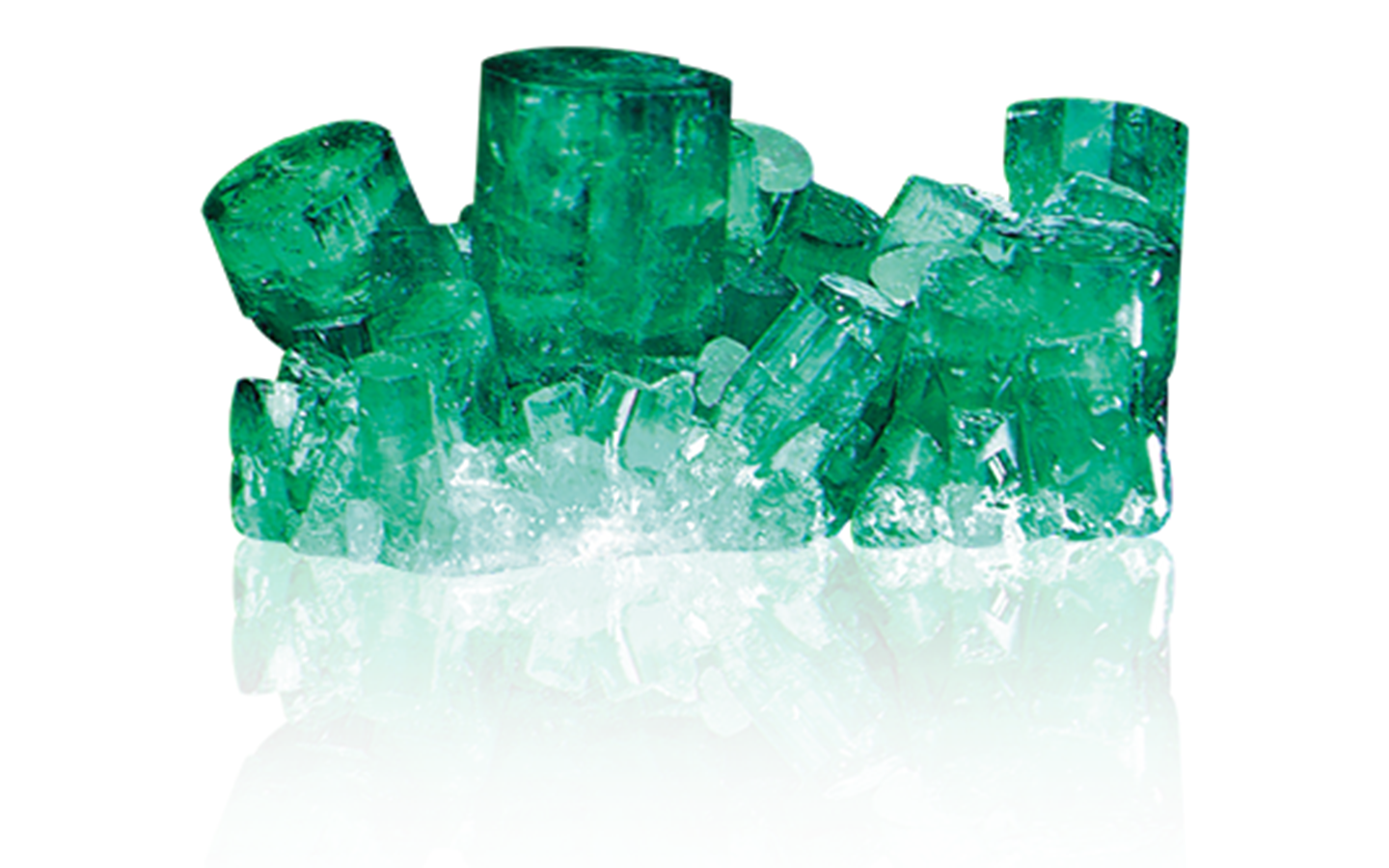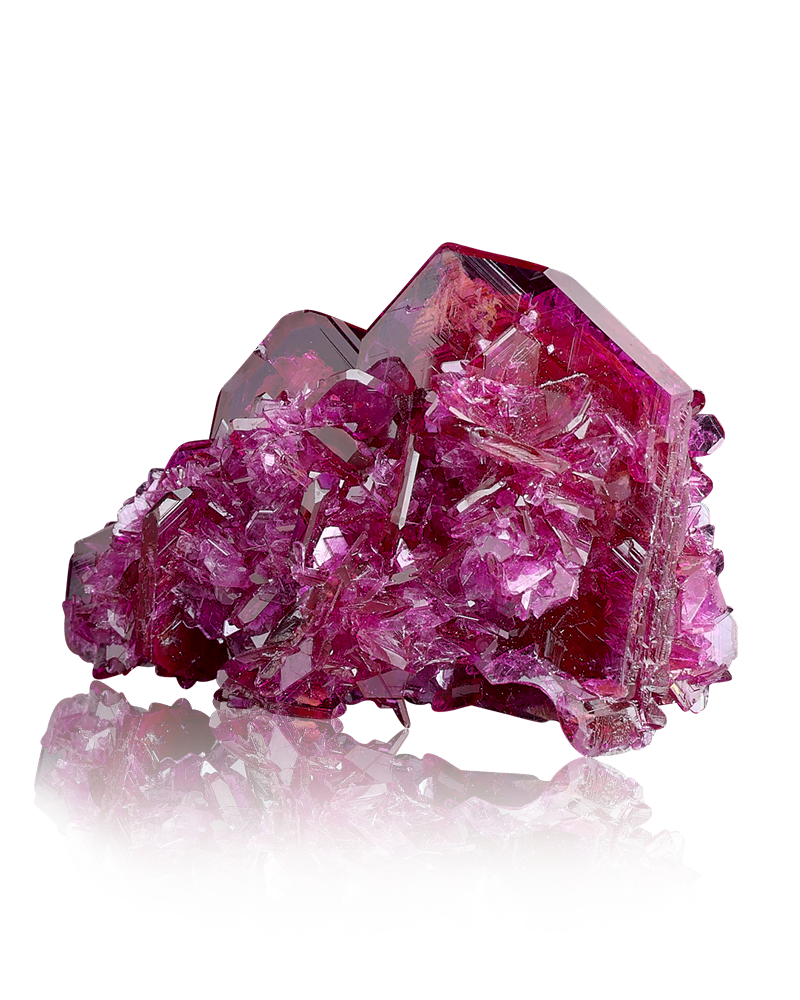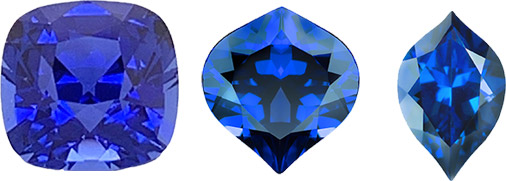Lab-Grown Gemstones Buying Guide
Gemstones are a miracle of nature: a miracle that has now been recreated by man.

Chatham is proud to be the pioneer of lab-grown gemstones.
These gemstones have the same physical, chemical, and optical properties as mined gems do. We don’t “make” gems. We control the environment so that crystals can grow naturally: recreating the conditions in which gems grow in the earth.
The process of growing gem crystals in a laboratory rather than mining them is a bit like making ice in your freezer instead of finding it in a lake. You place the starter material, water, in a container, and put the container into a controlled environment: your freezer. Create the right conditions of temperature and time and ice crystals will form. The freezer ice will usually be cleaner and more perfect than lake ice because you can carefully control the environment. But it’s still ice, just like the ice that forms in nature. In a way, what we do is a sophisticated high-tech version of freezing water to form ice.
One of the benefits of lab-grown gemstones is that they have less of an impact on the environment than mined gems.
Growing Colored Gemstone Crystals
Every Chatham lab grown gemstone gets its start with an earth-mined crystal slice placed inside a crucible chamber. We fill the chamber with a liquid containing the ingredients needed to feed crystal growth. This “liquid” is only possible at 1100 degrees Celsius! Looking into the chamber is like looking into a volcano.
We then seal the chamber and wait. A long time. In fact, for most of the gem varieties we grow we wait from six months to a year!
The chamber’s temperature and chemistry are carefully controlled to duplicate the conditions inside the part of the earth where that gem variety forms. Slowly the crystal begins to grow on the seed in its natural crystal shape. Once this process ends, you have a crystal rough identical to one found in nature. Chatham’s gemstones contain the same physical, chemical, and optical properties as their naturally mined counterparts.
That’s why we think it’s worth devoting a year to letting it grow. This process Chatham uses is known as flux growth. Read our blog on FTC terminology for more on the difference between inexpensive flame fusion or pulled created gemstones and Chatham’s more expensive lab grown gems.

It is still a “WOW” event every time we open up a crucible that has been untouched for 10 months. Sometimes it’s a big disappointment too. We are always experimenting by changing little things to see if we can improve the quality of our crystals. Experimentation is the key to continuing to innovate.
Every time there is an earthquake or power is lost for any sustained amount of time, crystal growth is interrupted and all the batches we are growing are lost. Any loss of power longer than 10 minutes will be visible in our crystals. This is why, although we love San Francisco, Chatham made a major decision in 1989 to diversify and grow crystals in different cities around the world.
Biological Impacts
One of Carroll Chatham’s greatest mysteries, has yet to be divulged: how do you maintain 1200 degrees Celsius for a year without any variances, not even one degree?
Our flux furnaces are extremely efficient! Each is about the size of a 50-gallon cylinder, about 4 feet tall and 3 feet wide. At the center is a molten flux of chemicals at 1200 degrees Celsius, and 18 inches away on the outside it is less than 80 degrees Fahrenheit. This creation was not so much to save power but to create stability. In the end it accomplished both quite well! The carbon footprint of our production energy in dollars is about 5 cents per carat.
The flux material Chatham uses continues to be part of a proprietary mixture and is purchased from chemical companies in its purest form. This purity is called five 9’s. That means that any chemical we acquire is 99.99999 pure. Best of all, we are able to reuse this flux chemical; it does not wear out or get contaminated. What are consumed are the elements that make up a gemstone. In the case of emerald that would be: beryllium, alumina, silica, and a pinch of chromium for color. None of these chemicals are expensive individually and are readily available from chemical supply houses.
So why are lab grown gemstones still expensive? TIME. Time is priceless and it takes about 12 months to grow our crystals, many at a time. The average batch of stones is about 10,000 carats but much of it is not usable. We lose on average 80-90% of the 10,000 carats simply cutting around inclusions; a natural part of crystal growth. We must also sacrifice some crystals to be used as seeds for the next growth run.
In addition to recycling our flux material, Chatham also reuses and refines much of our equipment. This includes our platinum crucibles where the actual growth process takes place.
While our methods duplicate closely what happens in nature, the mining process to unearth gem deposits is very different.
From Crystal to Gem
After studying each crystal’s shape and internal inclusions, we decide which shape to cut. We cut traditional shapes and some innovative new ones like the onion cut and the flame cut that we’ve designed exclusively for our fine jewelry collection.
No matter which shape we cut, we have strict standards for proportions, faceting and polish that ensure that all our gemstones have maximum brilliance, high clarity, and vivid color. To meet these standards, about 80% of the rough crystal is lost. Saving extra weight is never a consideration.
For our jewelry collection, we select one crystal in 200 that meets the strict standards for color and clarity.
